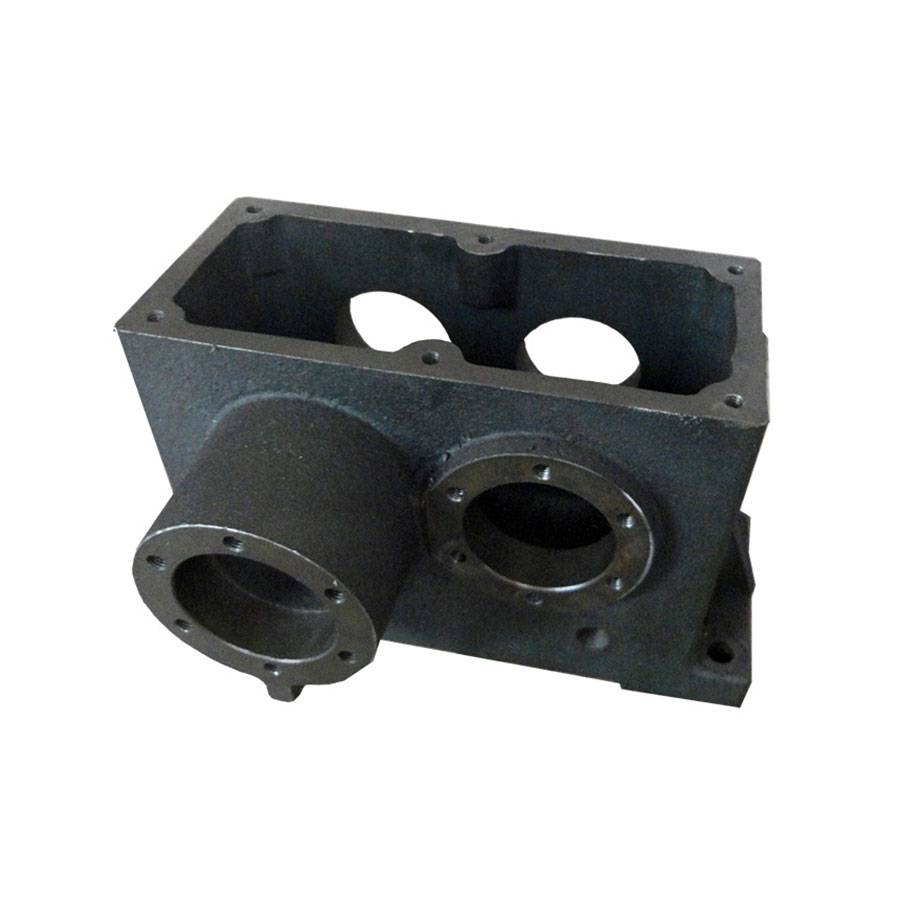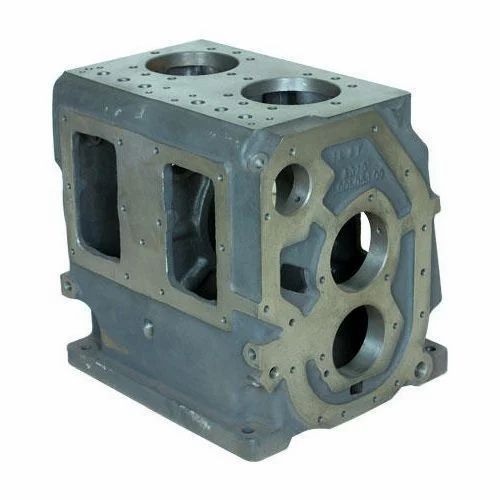What criteria are used to determine whether the holes of ductile iron castings are cast
Ductile Iron - Characteristics of the Holes of Ductile Iron Casti
Ductile iron is a common material for pipes, pipe fittings and other large castings. It is also a popular material for crankshafts and brake calipers.
Ductile iron has a higher proportion of carbon than steel, which creates different matrix microstructures that control its mechanical properties. These include the presence of spherical graphite nodules.
Observation
Ductile iron is very similar to cast iron, however, the graphite in ductile iron is formed into spherical graphite nodules rather than flakes. These spherical graphite nodules increase ductility and make ductile iron castings more durable. It also has a higher tensile strength than cast iron.
The tensile strength of ductile iron starts at 60,000 psi and can reach 120,000 psi. This ductility makes ductile iron an excellent material for structural parts that must withstand extreme loads.
This tensile strength is achieved by adding a very small amount of magnesium to molten iron. This process changes the way that graphite is formed and gives it a spherical structure that allows it to be more ductile than gray iron (flake shaped).
During solidification, the magnesium in the iron reacts with sulfur and oxygen to form spherical graphite nodules instead of flakes. This results in an unusual combination of properties, namely high ductility and low fatigue.
Another feature of ductile iron that distinguishes it from other forms of cast iron is the addition of more carbon than is usually found in gray iron. This conduit fittings allows ductile iron to have a much higher tensile strength than gray iron, resulting in stronger castings.
In addition to the tensile strength, ductile iron is also known for its corrosion resistance. This is achieved by using a higher proportion of manganese than is normally used in grey iron.
Other minor elements can be added to molten iron to alter its properties or to increase its ductility and/or strength. These include copper, nickel, chromium, and tin.
The tensile strength that can be obtained in ductile iron is higher than that of regular cast iron, due to the addition of more carbon in the melting process. This carbon reacts with sulfur and oxygen to form rounded nodules, which are more resistant to stress than spherical flakes.
The ductile iron properties are often enhanced through the use of additional elements, such as magnesium or tellurium. These additions are very important to the overall performance of ductile iron castings.

Measurement
The holes of ductile iron casti are often characterized by their morphology and their proximity to the casting surface (close blowholes). Blowholes are voids in which gas (typically carbon monoxide) is exuded from a melt or from the cavity walls. This occurs as a result of the interaction between the liquid alloy, the mold cavity wall and the compacted sand mixtures used to fill the mold.
Blowholes are a common defect in ductile iron casti. These cavities are usually close to the casting surface but can also be located in the upper parts of the casting, where there is a low melting temperature and fast solidification rates. They are usually of rounded morphology, variable size and have smooth internal surfaces.
Ductile iron is a strong and durable alloy that is commonly used in pipe, automotive components, wheels, gear boxes, pump housings, machine frames for the wind-power industry and many other industrial applications. Unlike gray iron, which is brittle and fractures easily, ductile iron has excellent strength and ductility.
These characteristics make it an ideal choice for a wide range of engineering and manufacturing projects. However, defects can occur in ductile iron castings, which can cause problems in production and lead to costly repairs.
Among the most common types of defects are the holes and slag inclusions. In addition, air holes, shrinkage or shrinkage cavity and sand inclusion are other types of defects that can occur in ductile iron castings.
Slag inclusions are formed as a result of the interactions between the constituents of the casting, the oxygen present in the mold cavities and the compacted sand mixtures. The composition of these slag inclusions is very variable and depends on the refractories, the alloy, the casting time and temperature, and the layout of the mold.
Sand inclusions can occur as a result of metal penetration into the mold or from the presence of inoculant grains. The former is more frequent in grey cast irons than ductile iron alloys, as the surface tension of the latter is lower and thus, the critical pressure for the metal to penetrate the sand grains is higher.
Tests
Ductile iron is a low-carbon, high-strength iron alloy that withstands bending and shock loading better than gray iron. It is used for a variety of industrial applications, including pipe, automotive components, gear boxes, pump housings, machine frames for wind power, and more.
It is also a popular material for impact-protection, such as bollards and railings. The malleable iron fittings ductile iron matrix, which consists of a mixture of ferrite and pearlite (Fe3C), has high strength, moderate ductility and good machinability.
Compared to gray iron, ductile iron has a unique microstructure that includes spheroidal graphite in the matrix. The presence of this spheroidal graphite microstructure leads to improved strength and ductility, but it also makes cast iron less tolerant of tensile and shock loading.
A typical defect in ductile iron castings is veining, which is typically found in heavy-section castings produced with chemically bonded silica sand molds, such as the one depicted in Figure 29. It is most common in overheated areas of the casting (hot spots), those locations with stress after solidification (abrupt section changes) and rigid areas of the mold.
These veins are often accompanied by dendrites that appear within the fissures, as shown in Figure 30a,b. Veins in large cast iron engine blocks are not uncommon.
The formation of these voids is probably due to nitrogen that is dissolved in the liquid alloy, and it depends on several processing aspects such as pouring time and temperature, cooling rate, gas outlets or mold permeability. It is therefore a problem that requires careful control of all these aspects to minimize the risk of occurrence of nitrogen fissures in cast iron alloys.
However, these fissures can also be caused by nitrogen picked up in the melt by the mold materials before the liquid alloy is poured. This is a much more common cause of defects in grey cast iron alloys with high carbon contents, especially those with high levels of hydrogen.
Although this type of defects is not the most common, they can be found in many different types of castings and are a real concern for casting quality. They can be caused by slag inclusions, corrosion of the mold, oxidized wet linings in ladles and casting facilities, poor quality steel scrap, or by low loss on ignition values in the green sand mixtures used to prepare the molds. They can also be triggered by a number of other factors, such as deficient lay-out designs or the use of too coarse inoculant grains for post inoculation.

Conclusions
Ductile iron is a cast iron alloy containing ferrite and pearlite that has been treated to include graphite nodules. The spherical shape of these nodules enhances the properties of ductile iron by increasing the tensile strength and ductility, as well as improving impact resistance.
During spheroidizing treatment, magnesium is added to the molten cast iron so that the graphite nodules form a near-spherical structure. This flexible pipe improves the strength and ductility of ductile iron and can lead to significant savings in material costs.
The morphology of the nodules in ductile iron changes with cooling rate, nodule count and alloying elements used during spheroidizing. The resulting microstructure is sensitive to actual solidification and inoculation processing. It is important to control the cooling rate in ductile iron castings to achieve proper spheroidizing and a smooth graphite nodule zone without voids or inclusions.
Inoculation addresses the tendency of carbon to precipitate out as graphite flakes and can reduce or eliminate these defects that may adversely affect strength and ductility. Inoculation entails adding small quantities of specially selected alloys to the molten cast iron so that these alloys can be incorporated into the molten cast iron to provide nucleation points for the carbon to crystallize.
This technique is applied to a variety of materials, including steel and aluminum. It is particularly useful when machining ductile iron because it allows the machinist to avoid cutting through a graphite flake.
It also provides a better surface finish for the machining workpiece than gray iron, which requires additional post-casting finishing such as sand blasting or grinding. It also allows the machining of complex parts without reducing the strength of the ductile iron, which can make it more economical to machine.
These advantages of ductile iron have made it an increasingly popular choice for engineering applications that require a low-cost, high-strength alternative to steel. Its strength to weight ratio makes it an excellent candidate for pipe fittings and other pressure-critical applications. It is also a common material in the automotive industry. The corrosion resistance of ductile iron is also an important benefit in some industries.
Comments
Post a Comment